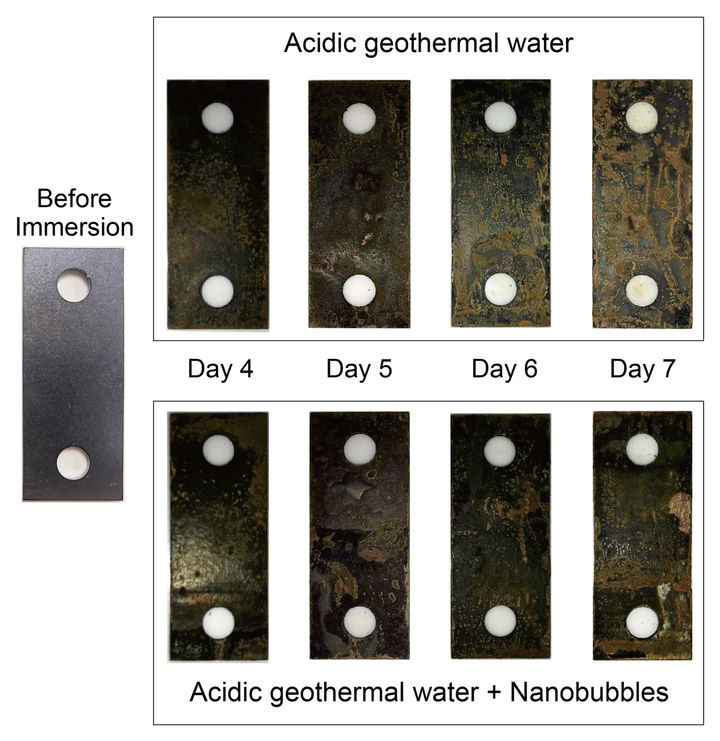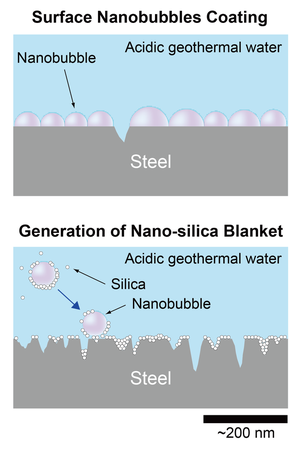Nanobubbles offer green solution for inhibiting corrosion
A team of Kyushu University researchers has found for the first time that adding air nanobubbles less than 1 µm in diameter to acidic geothermal water reduces corrosion of steel immersed in the water.

In the future, such nanobubbles could provide an environmentally friendly option for limiting corrosion of pipes used in geothermal power generation, a key challenge for further expanding use of the alternative power source.
“We were very excited that we could inhibit the corrosion just by injecting nanobubbles in our experiment,” says Asuki Aikawa, a master’s student at Kyushu University’s Department of Earth Resources Engineering at the time of the work and author on the paper reporting the results.
Demand for geothermal power plants is growing because they release less greenhouse gases and present fewer operational risks compared to conventional fossil-fuel and nuclear power plants, and many of the geothermal power plants in Japan are located in the Kyushu area.
However, corrosion on the surface of pipes in contact with acidic geothermal water is a formidable challenge to overcome to make geothermal power reliable.
Despite numerous efforts in mitigating steel corrosion, most inhibitors are chemicals that generate undesirable products by reacting with geothermal water.
The team led by Aikawa, who is now at Saibu Gas Co., Ltd., Japan, Arata Kioka, and Masami Nakagawa added nanobubbles of air to acidic water from a geothermal power plant as an alternative solution for inhibiting corrosion.
In their on-site experiment, the nanobubbles reduced steel corrosion by up to 50%.

“We envisioned that nanobubbles could somewhat mitigate the steel corrosion, but their effectiveness was greater than we expected,” says Arata Kioka, Research Assistant Professor/Assistant Professor at the Department of Earth Resources Engineering in the Faculty of Engineering.
“These results show that nanobubbles can be a powerful and green inhibitor of corrosion without generating undesirable products,” continues Kioka.
In the future, the Kyushu U team plans to explore further applications for nanobubbles in tackling other critical problems facing geothermal power systems, such as the formation of scale composed of calcium carbonate and silica inside pipes of geothermal infrastructures.
“We expect nanobubbles can also inhibit the scale formation, so we will continue relevant experiments for understanding the mechanism how nanobubbles can inhibit the scale formation,” comments Masami Nakagawa, a professor at the Department of Earth Resources Engineering at the time of the study who is now at Colorado School of Mines, USA.
“Nanobubbles hold great potential to solve major problems that have persisted for years in geothermal power plants,” adds Kioka.

